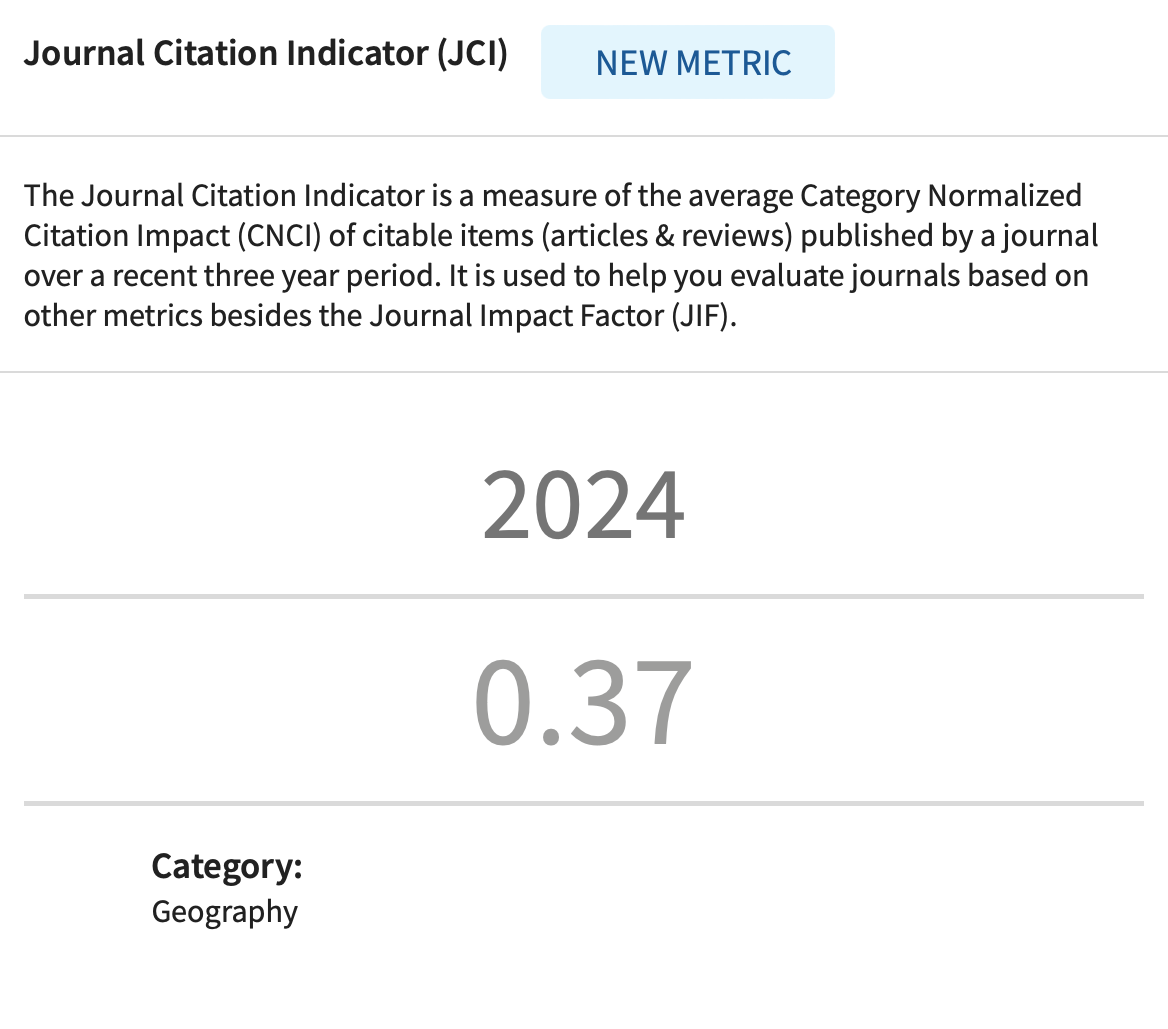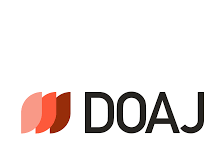ON-THE-JOB TRAINING, EMPLOYEE PERFORMANCE, AND MODERATING EFFECTS OF PERSONAL AND ORGANIZATIONAL MOTIVES IN VIETNAM'S TOURISM INDUSTRY
DOI:
https://doi.org/10.2298/IJGI250228013TKeywords:
on-the-job training, employee performance, moderating effects, tourism, VietnamAbstract
On-the-job training (OJT) practices have often been viewed as an effective tool that improves the performance of both employees and the company in the competitive economy. Based on the human resource development theory, this article attempts to examine the potential effects of OJT practices on employee performance (EP) in association with the presence of the moderating role of personal motivation (PM) and organizational support (OS). The statistical result from the survey of 548 employees who worked for tourism companies in Vietnam showed all constructs and their attributed items to be reliable and valid for testing the formulated hypotheses. The findings obtained from the structural model confirmed a strong and positive relationship between the OJT practices and EP, particularly the higher perception of the content and program of the OJT practices verified. Additionally, the moderation analysis revealed that personal expectations and OS for the OJT content and method were found as the key drive of enhancing the performance of employees when joining the OJT. Besides, an OJT program was also found as a distinctive determinant of the EP, not being interfered by the two moderators included. Finally, some suggestions concerning the effectiveness of the OJT practices and potential aspects of this study area are addressed.
Article metrics
References
Akin, G. (1994). Varieties of managerial learning. In C. E. Schneier, C. J. Russell, R. W. Beatty, & L. S. Baird (Eds.), The training and development sourcebook, second edition (pp. 115–124). Human Resource Development Press.
Al-kharabsheh, S. A., Attiany, M. S., Alshawabkeh, R. O. K., Hamadneh, S., & Alshurideh, M. T. (2022). The impact of digital HRM on employee performance through employee motivation. International Journal of Data and Network Science, 7(1), 275–282. http://doi.org/10.5267/j.ijdns.2022.10.006
Alipour, M., Salehi, M., & Shahnavaz, A. (2009). A study of on the job training effectiveness: Empirical evidence of Iran. International Journal of Business and Management, 4(11), 63–68. http://doi.org/10.5539/ijbm.v4n11p63
Aragón-Sánchez, A., Barba-Aragón, I., & Sanz-Valle, R. (2003). Effects of training on business results. The International Journal of Human Resource Management, 14(6), 956–980. https://doi.org/10.1080/0958519032000106164
Bafaneli, S., & Setibi, G. (2015). The impact of on-the-job training on employee performance: The case of Riley’s Hotel. Journal of Business Theory and Practice, 3(2), 239–251. https://core.ac.uk/download/pdf/268084804.pdf
Becker, G. S. (1975). Human Capital: A Theoretical and Empirical Analysis, with Special Reference to Education, Second Edition: Investment in human capital: effects on earnings. National Bureau of Economic Research.
Becker, G. S. (2009). Human Capital: A Theoretical and Empirical Analysis, with Special Reference to Education: Third Edition. University of Chicago Press.
Beqiri, T. (2019). Empirical study on intrinsic motivation factors of employees in transition economies. International Journal of Economics and Business Administration, 7(4), 307–319. https://www.um.edu.mt/library/oar/handle/123456789/53072
Blundell, R., Costa-Dias, M., Goll, D., & Meghir, C. (2021). Wages, experience, and training of women over the life cycle. Journal of Labor Economics, 39(1), 275–315. https://doi.org/10.1086/711400
Boyatzis, R. E. (2009). Competencies as a behavioral approach to emotional intelligence. Journal of Management Development, 28(9), 749–770. https://doi.org/10.1108/02621710910987647
Brown, J. (2002). Training needs assessment: A must for developing an effective training program. Public Personnel Management, 31(4), 569–578. https://doi.org/10.1177/009102600203100412
Bulte, E., Lensink, R., & Vu, N. (2017). Do gender and business trainings affect business outcomes? Experimental evidence from Vietnam. Management Science, 63(9), 2885–2902. https://doi.org/10.1287/mnsc.2016.2472
Chowdhury, S., Dey, P. K., Rodríguez-Espíndola, O., Parkes, G., Tuyet, N. T. A., Long, D. D., & Ha, T. P. (2022). Impact of organisational factors on the circular economy practices and sustainable performance of small and medium-sized enterprises in Vietnam. Journal of Business Research, 147, 362–378. https://doi.org/10.1016/j.jbusres.2022.03.077
Dhar, R. L. (2015). Service quality and the training of employees: The mediating role of organizational commitment. Tourism Management, 46, 419–430. https://doi.org/10.1016/j.tourman.2014.08.001
Duy, N. K., & Oanh, N. T. H. (2015). Impact evaluation of training on productivity of the small and medium enterprises in Vietnam. Asian Social Science, 11(10), 39–55. http://doi.org/10.5539/ass.v11n10p39
Etikan, I., Musa, S. A., & Alkassim, R. S. (2016). Comparison of convenience sampling and purposive sampling. American Journal of Theoretical and Applied Statistics, 5(1), 1–4. http://doi.org/10.11648/j.ajtas.20160501.11
Gerhart, B., & Feng, J. (2021). The resource-based view of the firm, human resources, and human capital: Progress and prospects. Journal of Management, 47(7), 1796–1819. https://doi.org/10.1177/0149206320978799
Guillén, M., Ferrero, I., & Hoffman, W. M. (2015). The neglected ethical and spiritual motivations in the workplace. Journal of Business Ethics, 128, 803–816. https://doi.org/10.1007/s10551-013-1985-7
Hair, Jr. J. F., Matthews, L. M., Matthews, R. L., & Sarstedt, M. (2017). PLS-SEM or CB-SEM: updated guidelines on which method to use. International Journal of Multivariate Data Analysis, 1(2), 107–123. https://doi.org/10.1504/IJMDA.2017.087624
Helpman, E., & Rangel, A. (1999). Adjusting to a new technology: experience and training. Journal of Economic Growth, 4, 359–383. https://doi.org/10.1023/A:1009888907797
Higuchi, Y., Nam, V. H., & Sonobe, T. (2015). Sustained impacts of Kaizen training. Journal of Economic Behavior & Organization, 120, 189–206. https://doi.org/10.1016/j.jebo.2015.10.009
Houldsworth, E., & Jirasinghe, D. (2006). Managing and measuring employee performance. Kogan Page Publishers.
Hunter, W. D. (2004). Knowledge, skills, attitudes, and experiences necessary to become globally competent [Doctoral dissertation, Lehigh University]. ProQuest. https://www.proquest.com/openview/82ebcaf19aef8d7a006227ad905882c6/1?pq-origsite=gscholar&cbl=18750&diss=y
Ibua, M., Kariuki, A., & Kamau, C. G. (2023). Effect of On-the-Job Training Techniques on Performance of SMES in Mombasa County. South Sahara Multidisciplinary Journal, 1(1), 17–27. https://doi.org/10.61250/ssmj/v1.i1.3
Idris, I., Adi, K. R., Soetjipto, B. E., & Supriyanto, A. S. (2020). The mediating role of job satisfaction on compensation, work environment, and employee performance: Evidence from Indonesia. Entrepreneurship and Sustainability Issues, 8(2), 735–750. http://doi.org/10.9770/jesi.2020.8.2(44)
King-Kauanui, S., Ngoc, S. D., & Ashley-Cotleur, C. (2006). Impact of human resource management: SME performance in Vietnam. Journal of Developmental Entrepreneurship, 11(01), 79–95. https://doi.org/10.1142/S1084946706000271
Kirkpatrick, D., & Kirkpatrick, J. (2006). Evaluating training programs: The four levels. Berrett-Koehler Publishers.
Kuvaas, B. (2006). Performance appraisal satisfaction and employee outcomes: mediating and moderating roles of work motivation. The International Journal of Human Resource Management, 17(3), 504–522. https://doi.org/10.1080/09585190500521581
Levinson, H. (2009). Reciprocation: The relationship between man and organization. In A. M. Freedman & K. H. Bradt (Eds.), Consulting psychology: Selected articles by Harry Levinson (pp. 31–47). American Psychological Association. https://psycnet.apa.org/doi/10.1037/11848-000
Liang, H.-M., Kao, R.-H., Tu, C.-C., Chin, C.-C., & Chung, W.-C. (2014). The influence of education and training on work attitudes and the moderating effect of supervisor attitudes: Examining Chinese employees. Social Indicators Research, 119, 853–875. https://doi.org/10.1007/s11205-013-0505-6
Martocchio, J. J. (2019). Human Resource Management. Pearson.
Méhaut, P., & Winch, C. (2012). The European Qualification Framework: Skills, Competences or Knowledge? European Educational Research Journal, 11(3), 369–381. https://doi.org/10.2304/eerj.2012.11.3.369
Menges, J. I., Tussing, D. V., Wihler, A., & Grant, A. M. (2017). When job performance is all relative: How family motivation energizes effort and compensates for intrinsic motivation. Academy of Management Journal, 60(2), 695–719. https://doi.org/10.5465/amj.2014.0898
Mikołajczyk, K. (2021). Changes in the approach to employee development in organisations as a result of the COVID-19 pandemic. European Journal of Training and Development, 46(5/6), 544–562. https://doi.org/10.1108/EJTD-12-2020-0171
Mvuyisi, M., & Mbukanma, I. (2023). Assessing the impact of on-the-job training on employee performance: A case of integrated tertiary software users in a rural university. International Journal of Research in Business and Social Science, 12(1), 90–98. https://doi.org/10.20525/ijrbs.v12i1.2248
National Statistics Office. (2023). Number of employed persons in the economy by status in employment (*) by Status in employment and Year [Data set]. https://www.gso.gov.vn/en/px-web/?pxid=E0244&theme=Population%20and%20Employment
Nazim, M., Nadeem, A. H., Sharif, M. S., Zeb, N., Ghazanfar, S., & Ali, M. (2020). Does intrinsic motivation mediate the impact of employee training on employee creativity? The moderation model of task complexity. Epistemology, 7(3), 112–124. https://journal.epistemology.pk/index.php/epistemology/article/view/133
Nguyen, L. T., & Shao, Y. (2019). The Impact of Training on Turnover Intention: The Role of Growth Need Strength Among Vietnamese Female Employees. The South East Asian Journal of Management, 13(1), Article 1. https://doi.org/10.21002/seam.v13i1.9996
Nguyen, T. Q., Nguyen, A. T., Tran, A. L., Le, H. T., Le, H. H. T., & Vu, L. P. (2021). Do workers benefit from on-the-job training? New evidence from matched employer-employee data. Finance Research Letters, 40, Article 101664. https://doi.org/10.1016/j.frl.2020.101664
Pham, L. T., & Hoang, H. V. (2019). The relationship between organizational learning capability and business performance: The case of Vietnam firms. Journal of Economics and Development, 21(2), 259–269. https://doi.org/10.1108/JED-10-2019-0041
Purwanto, A. (2022). The role of transformational leadership and organizational citizenship behavior on SMEs employee performance. Journal of Industrial Engineering & Management Research, 3(5), 39–45. https://doi.org/10.7777/jiemar.v3i5.318
Ramli, A. M., Asby, P. N. K., Noor, H. M., & Afrizal, T. (2022). Challenges of SME in the tourism industry: a review. Environment-Behaviour Proceedings Journal, 7(21), 249–256. https://doi.org/10.21834/ebpj.v7i21.3721
Salman, M., Ganie, S. A., & Saleem, I. (2020). Employee competencies as predictors of organizational performance: a study of public and private sector banks. Management and Labour Studies, 45(4), 416–432. https://doi.org/10.1177/0258042X20939014
Seufert, S., Guggemos, J., & Sailer, M. (2021). Technology-related knowledge, skills, and attitudes of pre-and in-service teachers: The current situation and emerging trends. Computers in Human Behavior, 115, Article 106552. https://doi.org/10.1016/j.chb.2020.106552
Shalley, C. E. (2024). Creating roles: What managers can do to establish expectations for creative performance. In J. Zhou & C. E. Shalley (Eds.), Handbook of organizational creativity (pp. 147–164). Psychology Press.
Solow, R. M. (1956). A Contribution to the Theory of Economic Growth. Quarterly Journal of Economics, 70(1), 65–94. https://doi.org/10.2307/1884513
Solow, R. M. (1996). Growth theory. In M. Bleaney & D. Greenaway (Eds.), A guide to modern economics (pp. 229–247). Routledge.
Suhardi, A. R., Oktari, S. D., & Budiawan, A. (2023). The Influence of Training Programs and Motivation on Employee Work Productivity. International Journal of Science and Society, 5(4), 887–896. https://doi.org/10.54783/ijsoc.v5i4.876
Todaro, M. P., & Smith, S. C. (2020). Economic Development (13 ed.). Pearson Education Limited.
Van der Klink, M. R., & Streumer, J. N. (2002). Effectiveness of on‐the‐job training. Journal of European Industrial Training, 26(2/3/4), 196–199. https://doi.org/10.1108/03090590210422076
Vo, T. T. D., Tuliao, K. V., & Chen, C.-W. (2022). Work motivation: The roles of individual needs and social conditions. Behavioral Sciences, 12(2), Article 49. https://doi.org/10.3390/bs12020049
Wulansari, N. A., Witiastuti, R. S., & Ridloah, S. (17–18 July, 2018). Employee performance measurement development based on Green HRM indicators. International Conference on Economics, Business and Economic Education 2018 (ICE-BEES 2018), Java, Indonesia. https://doi.org/10.18502/kss.v3i10.3201
Downloads
Published
How to Cite
Issue
Section
License
Copyright (c) 2025 Journal of the Geographical Institute “Jovan Cvijić” SASA

This work is licensed under a Creative Commons Attribution 4.0 International License.











